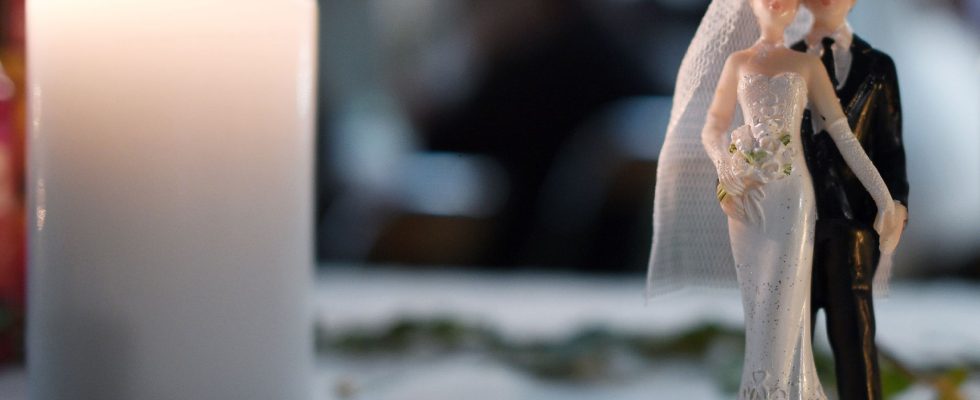When Emma marries Charles Bovary, she still benefits from “the freshness of her eighteen years”, he is barely over 23 years old. Chloe and Colin, the heroes of The Foam of Days by Boris Vian, published ninety-one years after Flaubert’s masterpiece, say yes to each other as they approach the age of 23. In The Frozen Woman, published in 1981, Annie Ernaux drags her spleen through 1960s France: shortly after meeting her future husband during her studies, she marries, pushed by social pressure. She will have two children before she turns 30. Forty-two years later, these stories are the exception, no longer the norm.
According to INSEE statistics, the French are marrying later and later – when they choose to get married. In 1996, the average woman married at age 30; a man, around 33 years old. In 2022, the average age at union was around 37 years for women and 40 years for men (37.2 and 39.6 years), according to the latest data published in January 2023 by INSEE . Same-sex unions are generally older: 38 years for female couples and 44 years for men. In almost thirty years, the average age of heterosexual marriages has therefore fallen by around ten years. A spectacular jump which can be explained by sociological, economic and societal changes. First of all, it is marriages of 20 to 24 years that tend to disappear. In 1946, they were the norm, women marrying at that age forming a cohort as large as all other women married that year. In 1994, they still represented 1 in 3 women who married. In 2021, only 1 in 8 women who married was under 25 years old.
Getting married after studying
Another fact weighs heavily on the average age of the bride and groom. “This statistic brings together the average ages for all marriages combined, including remarriages, which are made up of people older than the first unions”, explains Florence Maillochon, research director at the CNRS, sociologist, specializing in the study of interpersonal relationships. When Hugues Aufray, 94, remarried, he naturally influenced the statistics. After a peak in the early 2000s, the number of divorces pronounced by a judge stabilized around 120,000 per year, until the arrival of divorce by mutual consent caused it to drop to 62,300 in 2020. The opportunities to get back together are increasing. “On average, French people who marry for the first time are a little younger: 36 years old for men and 34 for women,” continues Florence Maillochon.
In the 1960s, the mass entry of women into the labor market, associated with their right to sign an employment contract or open a bank account without their spouse’s consent, enabled them to acquire autonomy financial. Marriage as a necessity has gradually faded away. “Marriage is no longer the sign of the passage of one family or another, whether we are talking about the original one or founding one’s own”, resumes Florence Maillochon. The signature before the mayor, which for many French people was the first step in adult life, has thus been gradually replaced by other stages, such as the first move in alone or with a roommate… Among the generations born from of the 1970s, the higher the diploma, the greater the chances of marriage occurring later.
Same age of marriage
As the sociologist Arnaud Régnier-Loilier remarks in an article on the development of the couple, “‘direct marriages’, that is to say concomitant with the start of life together, have become rare (1 in 10 for marriages celebrated in 2012-2013) whereas they represented nearly 9 out of 10 marriages at the beginning of the 1970s”. Most of the time, the French no longer marry their first sexual partner.
The liberation of morals that occurred in the 1970s led to a relaxation of social pressure around marriage and celibacy. “It has gradually become socially acceptable to stay single later and later,” notes Nicolas Belliot, lecturer at the University of Bordeaux, specialist in the demography of families and unions. “After increasing until the 1990s, the age of first forming a couple has not varied too much, but has diversified: we are experiencing more unions over the course of our lives, with more limited durations, when, previously, we only stayed with one person”, describes Laurent Toulemon, research director at INED.
Dearest weddings
These metamorphoses of the couple were accompanied by that of the law. The arrival in 1999 of the Civil Solidarity Pact (Pacs), allowing people of the same sex to benefit from a civil union, also found appeal in the eyes of heterosexual couples. In 2020, the year of the appearance of Covid-19 and reduced ceremonies, the number of PACS even exceeded that of marriages celebrated. Allowing tax households to be merged, this civil union allows couples to benefit from part of the advantages of marriage.
After cohabitation, the children – 63% of French newborns are now out of wedlock – couples can however choose to wed. And this union is not just a social signal. Survivor’s pension, unemployment benefit in certain cases, solidification of the estate… “Marriage comes at a stage in life where people think about their future, their inheritance, continues the researcher. This union offers a security that is not not today provided by the PACS.”
Even today, marriage is also a social signal: it serves to show a formal commitment, when the PACS is still mostly seen as a tax arrangement. “In general, it is perceived more as a private act, when the marriage is a public act, carried out for the attention of the couple but also of those around them”, explains Florence Maillochon. In a society where marriage is no longer paid for by the parents of the future spouses, saying “yes” later means doing so with potentially more purchasing power. It takes a lot to celebrate this love: according to Stéphane Seban, the organizer of the Wedding Fair, the average price of a celebration of 100 people fluctuated between 12,400 and 13,700 euros in 2022.
